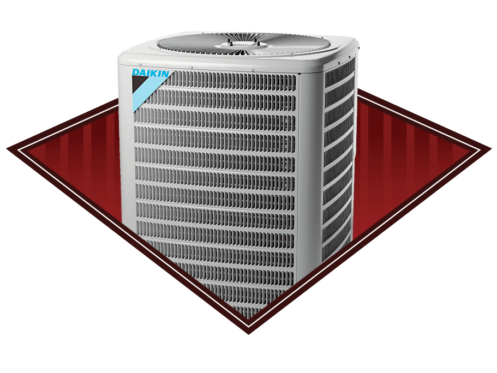When buying a new air conditioner for your house, you need to ensure that you get the right size that suits your cooling needs. An AC is a substantial investment, and buying the wrong size could cause long-term implications on your energy bills and home comfort.
While you might feel tempted to buy the biggest air conditioning unit you can find, it will only worsen the situation. An oversized AC cycles too often, resulting in inconsistent temperatures throughout the house. You will also experience increased humidity, and you will spend more money on your cooling bills.
Some people may also think that buying a smaller AC is quite economical. Unfortunately, it won’t adequately cool your house. The unit will have to work harder, leading to more system wear and tear and increased power usage. To avoid such issues, you need to choose a unit with the proper cooling capacity. Follow the steps below to determine the right AC size for your house.
1. Calculate Your House’s Square Footage
If you’re buying an air conditioner system to cool the entire house, you need to calculate the square footage of all the rooms. Measure the room’s length and width, multiply them, and get the total. Remember to exclude spaces that you don’t need to heat, like the sunroom or garage.
For an irregularly shaped house, divide the rooms into sections and calculate the area. If you have a triangular-shaped room, multiply the length and width and divide the answer by two. For circular spaces, determine the radius — the distance from one end to the center — and calculate the area. The bigger a house is, the more energy it requires to cool, so you might need a more powerful AC unit.
2. Determine the BTU Output
The British thermal unit measures the heating output in an air conditioning system. You should always check the BTU rating while buying an AC since it tells you how powerful the system is. The higher the BTUs, the more powerful the air conditioner is.
You will need 20 BTUs per square foot to cool your house adequately. Hence, to determine the right BTUs for your home, multiply your square footage by 20. For instance, if you want to cool a 500-square foot room, multiply 500 by 20. The answer shows that you need a unit with 1000 BTUs to sufficiently cool the space.
3. Consider the Climate in Your Region
After calculating the square footage and BTUs, there are still various factors that you need to take into account. You shouldn’t choose your new air conditioner based on the fixed results from your calculations. The location of your home and the climate matter, too.
If you live in extremely hot regions, your AC will need to work harder to maintain comfortable indoor temperatures. Therefore, you will need a more powerful AC in such areas than in cooler regions. People living in warmer climates need to add around 10% to 20% more BTUs per room.
4. Adjust the Size Based on the Number of Home Occupants
Every human body releases a certain amount of heat into the air. This will contribute to the air volume that your AC needs to cool. If you have more than two people occupying a room, add about 600 BTUs to your AC’s cooling power.
5. Take Into Account the Type of Rooms in Your House
Areas with heat-generating appliances require your AC to work harder to maintain a comfortable temperature. The kitchen will need more cooling capacity, especially if you run heat-dissipating appliances like an oven. If you intend to cool the kitchen, add an extra 4000 BTUs to the calculated size of your AC.
The same case happens if you have a gym in the house. It will take more energy to cool the gym during exercises. Add about 380 BTUs for each person working out in the space at a specific period of the day. Also, east or west-facing rooms tend to get very hot during summer due to direct sunlight, so you will need a more powerful AC.
6. Consider the Ceiling Height
Although most buildings conform to a standard height, some homeowners prefer higher ceilings to add a spacious feel to the house. If your roof is more than four inches taller than the standard, it will affect your AC’s operational efficiency. Such a house has a larger volume of air that needs cooling, so you might require a powerful unit. You should plan for an extra 10% above your standard BTU level in such a case.
7. Assess the Level of Insulation
The amount of insulation in your house will affect the size of the AC required. If you have a well-insulated home, you can go for a smaller unit that falls within the square footage of your house. However, if there are gaps between the window or door spaces that let in a lot of sunlight, you will need to increase your AC’s capacity by 10%.
Although larger windows give your house a spacious appearance, they affect your home’s temperature. If you have more and bigger windows in each room, take this into consideration. You can still use curtains, blinds, and shutters to block excess sunlight from entering your house. If you keep the windows covered for most days, you can decrease the BTUs by about 10%.
Also, consider the design of your home while choosing an AC. If you live in a two-story house, you might need a unit with slightly fewer BTUs since the second floor offers an extra layer of insulation for the ground floor. Also, keep in mind that older homes have multiple areas where air can escape, so you might need an AC with a little more BTUs.
Bottom Line
To maintain comfortable indoor temperatures in scorching summer months, you need to choose the right air conditioning unit size. This might seem somewhat difficult, especially if it’s your first time. It’s worth noting that two ACs might have the same power output but different levels of efficiency. Besides the size, it’s a good idea that you also check the unit’s seasonal energy efficiency ratio (SEER). An AC with a higher SEER rating uses less energy.
Even if you manage to choose the right unit size on your own, it would be best to leave the installation task to professionals. An AC is a very complex piece of equipment, and any simple mistake can affect its ability to perform at an optimum level. Professional technicians have the proper knowledge regarding different AC models, and they can perform safe installations. They will also assess the nature of the ductwork and make the necessary adjustments for compatibility.
If you have difficulties estimating the right AC size for your house, you can always reach out to AC by J. We specialize in AC and furnace installation, repair, and maintenance services. Our company also offers heat pump repairs, ductless system installations, pipe repairs, leak detection, water treatment, water heaters, sump pump services, and drain cleaning services. You can access our offerings if you reside in Scottsdale, AZ, or the surrounding areas. Get in touch with us today to schedule an appointment and try out any of our incredible services.






